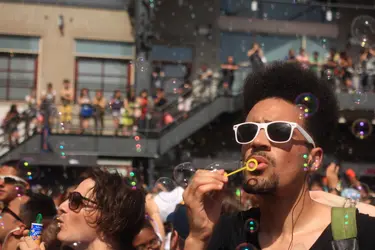There are two parts to photography - the technical and the compositional. The technical covers exposure control, focus placement, light placement, and the like. When you use much more or much less DOF compared to the "standard" exposure, or much shorter or longer shutter speed (again compared to the "standard"), then you are starting to make creative choices with respect to which aspects you want to emphasize. Same goes for creative use of focus placement, deliberate choices to bias the exposure to the lighter or darker sides, which focal length to use, which filter(s) to use and so on.
The compositional aspects relate to what you point your camera at, from what height, including what background/foreground, and the placement/arrangement of the various elements in the frame. Combined with the judicious use of the technical elements, you get images where the technical complements the compositional. A big challenge of composition is to identify the "subject" and to decide how much separation you want between it and the foreground/background. A common problem is to use too much DOF and have the suject get lost in the foreground/background detail. That is the problem, in my opinion, of the third shot - lots and lots of detail and we're really not sure where to start looking. On the other hand, the first shot has a pretty clear main subject, and the DOF is sufficiently shallow to allow the background to be present, yet not compete with the main subject. As for the second shot - you'd need a lot of words to describe what is in the frame, and nothing really stands out distinctly. That is where you, the photographer, has to help us, the viewers, know what to look at by giving us the visual clues, as "This is sharp and bright, so look here first! Then follow the line to the next point, then circle around and come back to the main point!"
The "KIS" principle is a good one to keep in mind.
 1/2500 F3.2 iso -100
1/2500 F3.2 iso -100 1/2500 F2.8 ISO-100
1/2500 F2.8 ISO-100 1/320 F2.8 ISO-100
1/320 F2.8 ISO-100 1/2500 F3.2 iso -100
1/2500 F3.2 iso -100 1/2500 F2.8 ISO-100
1/2500 F2.8 ISO-100 1/320 F2.8 ISO-100
1/320 F2.8 ISO-100

![[No title]](/data/xfmg/thumbnail/36/36423-4f4abd5f32da2219d4967c7a13b07a8c.jpg?1734168833)




![[No title]](/data/xfmg/thumbnail/40/40356-883c642c8d24d2709b359f9c8b196fcf.jpg?1734174788)




